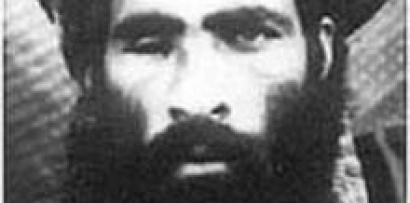On July 29, Afghanistan’s secret services have confirmed that Taliban leader Mullah Mohammad Omar has been dead for two or three years in a Pakistani hospital, although this has not been confirmed by the Taliban.
Mullah Omar was a reclusive figure even before his Taliban government was driven from power in late 2001 and he was forced into hiding – very few images of him exist.
There have been several reports in the past that Mullah Omar had died.
A statement purporting to be from Mullah Omar was released in July backing peace talks with the Afghan government. The last audio message thought to be from him appeared in 2006 but even this was leaked and not meant for public consumption.
In April 2015, the Taliban published a biography of Mullah Omar, saying he was alive and still supreme leader of the movement, as he had been since 1996.
Taliban say Mullah Omar was born in 1960 in the village of Chah-i-Himmat, in Kandahar province.
He fought in resistance against Soviet occupation in 1980s, suffering a shrapnel injury to his right eye.
He also forged close ties to al-Qaeda leader Osama Bin Laden.
Mullah Omar became “supreme leader” of Taliban movement in 1996.
US-led forces overthrew his government in 2001; US state department has a $10 million bounty on him.
The biography says he does not own a home and has no foreign bank account, and saying he “has a special sense of humor”
The Afghan Taliban have published a surprise biography of the reclusive Mullah Mohammed Omar, to mark his 19th year as their supreme leader.
The 5,000-word biography on their main website clarifies disputed facts about his birth and upbringing.
It lists his favorite weapon – the RPG 7 – and says he leads a simple life and has a “special” sense of humor.
It says Mullah Omar, whose whereabouts were unknown, “remains in touch” with day-to-day Afghan and world events.
The US state department has a $10 million bounty on Mullah Omar, who has not been seen since the US-led invasion of Afghanistan in 2001.
It was Mullah Omar’s backing for al-Qaeda leader Osama Bin Laden that sparked the campaign.
It is unclear why the Taliban have chosen the 19th anniversary of his supreme leadership to publish the biography but some analysts say it may be an attempt to counter the growing influence of Islamic State in Afghanistan.
Commentators and Taliban watchers have been unable to agree on many facts about Mullah Omar, including his birth and heritage.
The biography says he was born in 1960 in the village of Chah-i-Himmat, in the Khakrez district of Kandahar province, in the south of the country.
It refers to the supreme leader as Mullah Mohammad Umar “Mujahid” and says he is from the Tomzi clan of the Hotak tribe.
It says his father was Moulavi Ghulam Nabi, a “respected erudite and social figure” who died five years after Mohammed Omar’s birth. The family moved to Uruzgan province.
The biography says Mullah Omar abandoned his studies in a madrassa school after the Soviet forces invaded Afghanistan and became a jihadist “to discharge his religious obligation”.
It lists his military feats fighting the Russians between 1983 and 1991, saying he was wounded four times and lost his right eye.
In 1994, Mullah Omar took over leading the Islamic mujahideen to tackle the “factional fighting” among warlords that followed the collapse of the communist regime in 1992.
Then in 1996 he was conferred the title “ameer-ul-momineen” (head of the pious believers), the biography says, becoming supreme leader.
After taking Kabul and establishing the Islamic Emirate of Afghanistan, the biography tells of the “arrogant infidel powers of the world” who “could not tolerate Sharia law” and launched a joint military invasion.
In a section on his “charismatic personality”, the biography says Mullah Omar is tranquil and does not lose either temper or courage, does not own a home and has no foreign bank account and is affable, has a special sense of humor and never considers himself superior to his colleagues.
In a section entitled His daily activities in the present circumstances, the biography says: “In the present crucial conditions and regularly being tracked by the enemy, no major change and disruption has been observed in the routine works of [Mullah Omar].”
It says he “keenly follows and inspects the jihadi activities against the brutal infidel foreign invaders” adding: “He remains in touch with the day-to-day happenings of his country as well as the outside world.”
https://www.youtube.com/watch?v=kM4V3inPjkY
